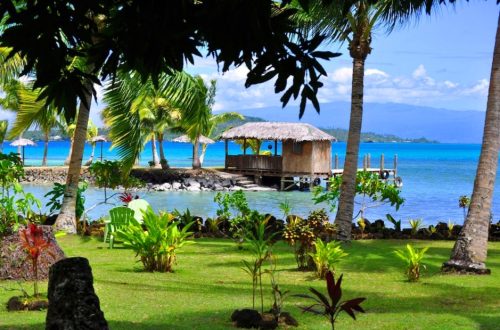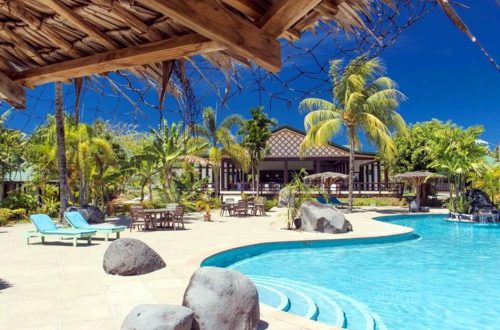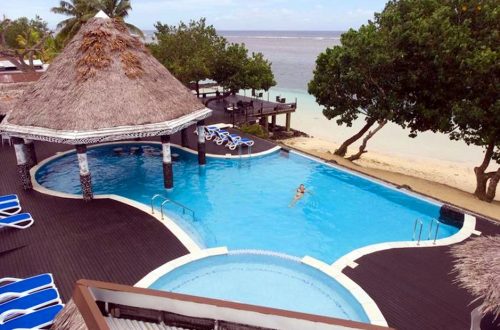History of Savai’i
Savai’i Island, the largest and most western island of Samoa, is a land of stunning natural beauty and ancient cultural history. Its volcanic origins, lush tropical forests, and azure waters attract visitors from around the world. The island’s captivating past, intertwined with myths, legends, and the traces of ancient civilizations, contributes to its allure. This article will explore the extensive history of Savai’i Island, from its geological formation to its role in Samoan culture.
Geological Formation and the Legend of Nafanua
Savai’i Island was formed through volcanic activity that dates back approximately five million years. The island is part of the Samoa hotspot, an area in the Pacific Ocean where the Earth’s mantle has produced high levels of volcanic activity. The island’s landscape is dominated by central volcanic mountains and a fringing coral reef. The highest peak, Mount Silisili, reaches an elevation of 1,858 meters (6,096 feet) above sea level.
Savai’i is steeped in legends, with the tale of Nafanua, the Samoan goddess of war, being one of the most famous. According to mythology, Nafanua freed the people of Savai’i from oppression and established the Malietoa lineage, which became one of the most important chiefly families in Samoa. The legend of Nafanua is an integral part of the island’s cultural identity and history.
Early Settlement and Culture
The first human settlers are believed to have arrived on Savai’i Island around 1000 BCE, making their way from Southeast Asia via the Bismarck Archipelago and the Solomon Islands. These settlers, known as Lapita people, were skilled seafarers and navigators. They brought with them their distinctive pottery, characterized by intricate geometric designs.
Over time, the Lapita people developed into the Polynesians, who established a unique cultural identity. The inhabitants of Savai’i Island lived in small, self-sufficient villages, governed by a council of chiefs (matai) who maintained order and led religious ceremonies. The Samoan culture was based on respect for family, community, and the environment, with an emphasis on traditional customs, storytelling, and communal work.
European Contact and Colonization
The first European to sight the Samoan Islands was Dutch explorer Jacob Roggeveen in 1722. However, it wasn’t until the arrival of French explorers Louis-Antoine de Bougainville in 1768 and Jean-François de Galaup, comte de La Pérouse in 1787 that the islands began to draw significant attention from the outside world. Christian missionaries, traders, and whalers soon followed, and by the mid-19th century, the islands had become a significant stopover for ships traveling between Australia and California.
European contact led to significant changes in Samoan society, including the introduction of new diseases, weapons, and religious beliefs. The London Missionary Society arrived on Savai’i Island in 1830, and their efforts to spread Christianity were largely successful. By the end of the century, most Samoans had converted to Christianity, and traditional beliefs and customs began to wane.
Political Struggles and the Tripartite Convention
The late 19th century saw increased competition among Western powers for influence and control over the Samoan Islands. Britain, Germany, and the United States all sought to establish a foothold in the region due to its strategic location and abundant resources. This competition led to political unrest, as different factions within Samoa aligned themselves with various foreign powers. This struggle for power culminated in the Samoan Civil War in the late 19th century, with the Mata’afa and Malietoa factions representing the major local groups involved. The Malietoa faction was supported by the British and Americans, while the Mata’afa faction was backed by the Germans. The civil war and subsequent international tensions were finally resolved with the Tripartite Convention in 1899. The convention divided the Samoan archipelago between Germany and the United States, with Germany gaining control over the western islands, including Savai’i, and the U.S. controlling the eastern islands.
German and New Zealand Rule
Under German control, Savai’i saw significant changes, including the establishment of plantations for the cultivation of copra and cacao. The German administration made efforts to respect Samoan customs and traditional power structures, although this period was marked by a certain degree of unrest and resistance.
Germany’s rule over Western Samoa (including Savai’i) was short-lived, as New Zealand took control of the islands at the onset of World War I. New Zealand administered Western Samoa as a League of Nations Mandate and later as a United Nations Trust Territory. This period was marked by a significant event in 1918 when the New Zealand administration mishandled the response to the influenza pandemic, resulting in the death of about 20% of Samoa’s population.
Independence and Modern Savai’i
The desire for self-determination grew stronger in the years following World War II. Samoans sought independence from colonial rule, and the Mau movement, a non-violent group advocating for Samoan self-governance, gained momentum. On January 1, 1962, Western Samoa became the first Pacific island country to gain independence. In 1997, the country officially changed its name to Samoa.
In the post-independence era, Savai’i has retained much of its traditional culture, more so than the more populated and developed Upolu. The island is known for its “fa’a Samoa” (the Samoan way), where ancient customs and traditions are preserved. Villages on Savai’i still rely on subsistence farming and fishing, and the matai system of governance continues to be an integral part of the community.
From its volcanic birth to its rich cultural history and journey towards independence, Savai’i Island’s story is as enchanting as its lush landscapes. Today, the island represents a unique blend of traditional Samoan life and modern influences. Its captivating history continues to shape the island and the lives of its inhabitants, making it an intriguing destination for those interested in experiencing the Pacific’s heritage and natural beauty.



